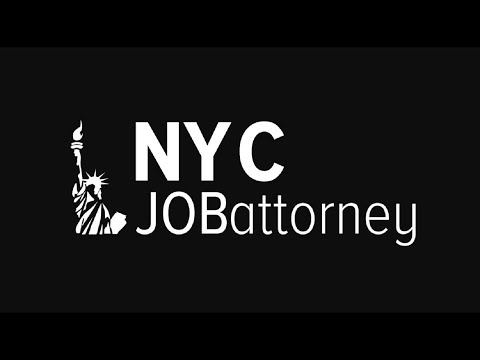
Legal Options for Addressing Discrimination in New York: A Comprehensive Overview
Disclaimer: This article aims to provide preliminary information on the legal options available for addressing discrimination in New York. It is important to note that laws and regulations are subject to change, and each case is unique. Therefore, it is crucial to consult with other reliable sources, such as legal professionals or government agencies, for specific advice and guidance.
Dear reader,
📋 Content in this article
Welcome to this informative article on the legal options for addressing discrimination in New York. Discrimination is a matter of great concern and addressing it is crucial to ensuring equality and justice for all individuals. It is essential to understand the legal avenues available in order to combat discrimination effectively.
In New York, both federal and state laws protect individuals from various forms of discrimination, including but not limited to race, religion, gender, age, disability, national origin, sexual orientation, and marital status. These laws aim to provide victims of discrimination with legal remedies and avenues for seeking justice.
To help you navigate through this complex legal landscape, we have compiled a list of potential legal options available to victims of discrimination in New York:
Understanding Anti-Discrimination Laws in New York State
Understanding Anti-Discrimination Laws in New York State
In the state of New York, there are robust laws in place to protect individuals from discrimination in various areas of life, including employment, housing, public accommodations, and more. It is crucial to have a firm understanding of these laws and the avenues available for addressing discrimination if you believe you have been a victim. This article aims to provide you with a comprehensive overview of anti-discrimination laws in New York and the legal options that exist for seeking justice.
1. Protected Classes
Under New York State law, individuals are protected from discrimination based on certain characteristics known as “protected classes.” These include, but are not limited to:
It is important to note that this list is not exhaustive, and there may be additional protected classes depending on the specific circumstances.
2. Anti-Discrimination Laws
New York State has enacted several key laws to combat discrimination, including:
These laws work together to provide comprehensive protection against discrimination in various contexts, such as employment, housing, public accommodations, education, and more. They prohibit discriminatory practices and provide remedies for victims of discrimination.
3. Legal Options for Addressing Discrimination
If you believe you
Understanding Discrimination Policies in the United States: A Comprehensive Overview
Title: Understanding Discrimination Policies in the United States: A Comprehensive Overview
Introduction:
Discrimination is a pervasive issue in society, affecting individuals in various aspects of their lives. In the United States, laws have been enacted to protect individuals from discrimination based on certain protected characteristics. This article will provide a comprehensive overview of discrimination policies in the United States, with a specific focus on legal options for addressing discrimination in New York.
I. What Constitutes Discrimination?
Discrimination occurs when an individual is treated unfairly or unfavorably because of their membership in a protected class. The protected classes recognized under federal law include race, color, national origin, sex, religion, disability, and age. Some state and local laws may also include additional protected classes, such as sexual orientation and gender identity.
II. Federal Laws Prohibiting Discrimination:
The primary federal law addressing discrimination is Title VII of the Civil Rights Act of 1964. Title VII prohibits discrimination in employment based on protected characteristics. It applies to employers with 15 or more employees and covers areas such as hiring, firing, promotions, and compensation.
III. Legal Options for Addressing Discrimination in New York:
In addition to federal laws, New York has its own laws that provide additional protections against discrimination.
1. New York State Human Rights Law:
The New York State Human Rights Law (NYSHRL) prohibits discrimination based on various protected classes, including race, color, national origin, sex, religion, age, disability, marital status, and sexual orientation. It covers both employers with four or more employees and housing providers.
2. New York City Human Rights Law:
In New York City, the New York City Human Rights Law (NYCHRL) provides even broader protections against discrimination.
Title: Legal Options for Addressing Discrimination in New York: Staying Current and Informed
Introduction:
Discrimination is a pervasive problem that affects individuals and communities across the United States. In New York, like in many other states, there are laws and regulations in place to address and combat discrimination. However, staying current on this topic is crucial, as laws and regulations can change over time. This article aims to provide a comprehensive overview of the legal options available for addressing discrimination in New York, emphasizing the importance of staying informed and verifying the information provided.
1. Understanding Discrimination Laws in New York:
New York State has robust laws that protect individuals from discrimination in various aspects of life, including employment, housing, public accommodations, and education. The primary legislation addressing discrimination is the New York Human Rights Law (NYHRL), which prohibits discrimination based on protected characteristics such as race, color, religion, sex, national origin, age, disability, or sexual orientation. It is important to note that local laws in cities like New York City may also provide additional protections.
2. Filing a Discrimination Complaint:
If you believe you have been a victim of discrimination in New York, it is important to be aware of the process for filing a complaint. In most cases, individuals must first file a complaint with the appropriate government agency responsible for enforcing anti-discrimination laws. For instance, the New York State Division of Human Rights (DHR) handles complaints related to employment and housing discrimination. Similarly, the New York City Commission on Human Rights oversees complaints within the City.
3. Statute of Limitations:
It is crucial to understand the statute of limitations for filing a discrimination complaint. In New York State, the general statute of limitations for filing a complaint with the DHR is one year from the date of the alleged discriminatory act.
